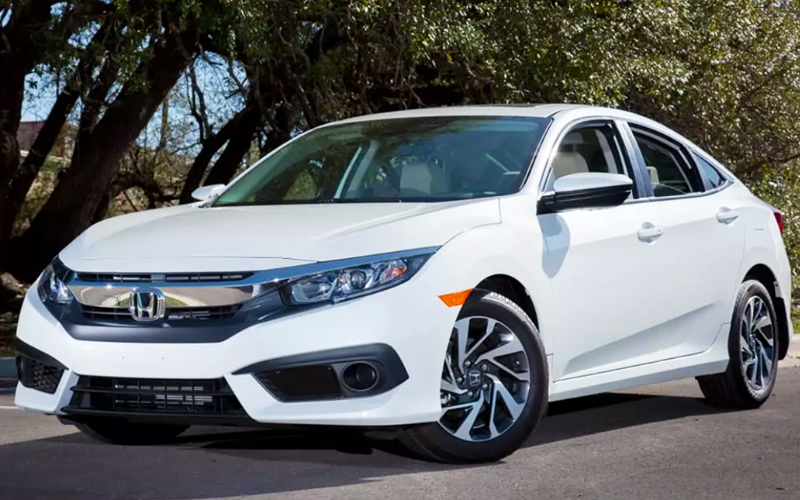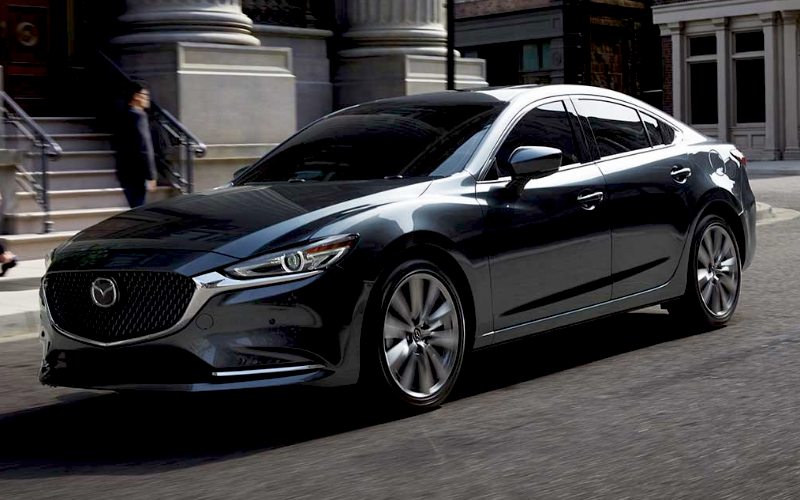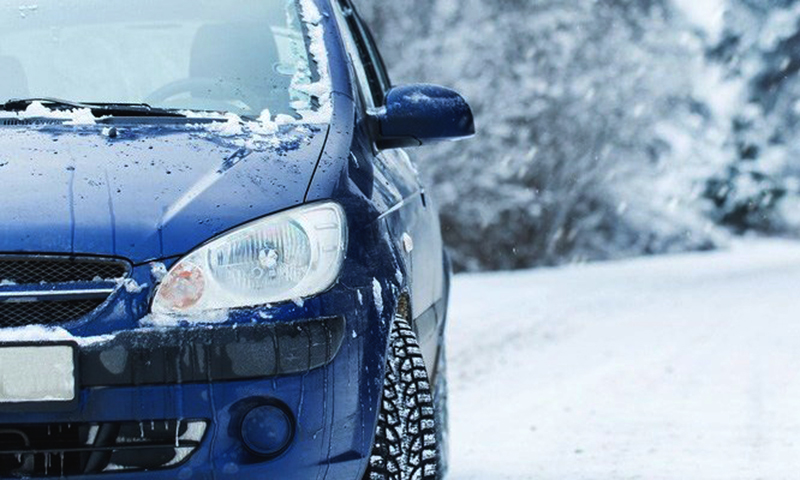People get their driving license at different times in their lives. New drivers are not always teens fresh out of drivers’ ed class. Some, for example, are people who have moved from the city to the suburbs or country areas where they find they now need to drive in order to retain any sense of independence. In any event, new drivers of all types need helpful tips and advice. That’s what today’s blog is all about.
The first thing a new driver has to do is be sure that they’ve got the right car. That’s where we’ll be starting today’s blog. After that, we’ll have additional advice for new drivers that will help to keep the safe on the road and enjoy their time behind the wheel.
Choosing Your First Car
Some new drivers will simply continue to drive the car they have been learning in. Others may have learned in a parent’s or friend’s car, in which case gaining their full license means they now have to get their own vehicle. That can be a tricky proposition if you are not sure what exactly you are looking for. There’s a lot of choice out there, so let us give you some pointers.
A car that is suitable for a new driver will have the following qualities:
1. Having Limited Engine Size
A 5.2L V8 engine is not the ideal thing for a new driver to take control of. A powerful engine means more ways to lose control, plus a lot more speed and likely physical size of the vehicle to deal with, too. Bigger engines typically bring powerful extras, as well, such as turbochargers. All that thrust and acceleration is not well placed into the hands of an automotive greenhorn. A car with a huge engine will also certainly be more expensive to insure for a new driver, and that’s assuming you can actually find an insurance provider to give you a quote.
For all those reasons, it’s best to stick to a smaller engine capacity. Ideally, something under 2.0L is ideal. Many hatchback cars come with engines with a displacement of just 1.2-1.6L. These are the most suitable for new drivers. They have plenty of power to deal with everyday driving and beyond, but are less risky, and cheaper to insure. New drivers need time to build up both experience and confidence on the road. Confidence comes from feeling safe and secure with the engine you have. A larger engine is intimidating for the vast majority of new drivers to handle.
2. A Smaller Overall Size
Besides the engine, you should also consider the overall size of the vehicle and once again favor the smaller cars. There’s often concern among people in the US that smaller cars mean sacrificing safety on the road. “If you’re in a crash,” they say, “would you rather be in a compact or a full-size SUV?” The logic in itself is hard to fault. Compact cars are smaller, and if they happen to be involved in collisions there is a chance that driver and passenger may be worse off than they would be in a GMC Hummer or an Abrams battle tank, for instance.
Having said that, smaller cars have other advantages that are important for new drivers. We can’t spend all our time just imagining that any car we drive will be involved in a multi-car pileup on the freeway. It’s not impossible, but the odds remain remote. Meanwhile, to focus on collisions would be to ignore the many advantages of compact and smaller sedan cars.
First of all, these cars are easier for new drivers to handle. It doesn’t matter if they’re driving in traffic or along country lanes, a new driver needs to be able to maneuver the car easily and without worrying about clipping mirrors or scraping fender flares against anything on the way.
Second, smaller cars are cheaper to purchase and cheaper to insure. They are a perfect vehicle for building up a clean insurance history with which they can later get a great deal on a larger car, should they want one.
Finally, related to handling as well, compact cars are easier to park, and you get a wider range of parking spots, too. Those people who stubbornly stick to giant cars that they don’t need won’t be parking up in any “compact only” spots anytime soon, whereas in a compact or small sedan, you can park in any space, big or small.
3. An Automatic Transmission
Drivers in the US overwhelmingly drive automatic transmission cars, and have done for years. CarMax reported that an astonishing 96 percent of Americans drive automatic cars. It’s even quite possible that many who are driving a manual transmission only do so because of no other choice, such as a particular model they like or favor not producing an automatic transmission (for whatever reason).
New drivers benefit greatly from driving an automatic transmission. Conventional wisdom tended to look down on this practice because it was seen as depriving new drivers of at least getting the skill of driving a stick, even if in the long term they don’t keep it up. “It’s better to be able to drive a stick, but not need to,” they said.
While this advice is sound, and still followed quite rigidly in European countries like the UK where the number of automatic vehicles is still only around 20 percent, a shifting market is changing all of that. Europeans may not like automatics, but they are coming whether people like it or not in the form of electric cars. New drivers in the US, therefore, are perfectly well served by an automatic car. Sooner or later, they’ll all be automatic.
4. A New or Recent Model
You might wince at the idea of buying a brand-new or near-new car for a new driver, but once again there’s a lot of logic to the idea. Car technology is now advancing quickly, to the point where even 2-3 model years bring a huge difference in the amount of available technology in each model, especially safety features. Therefore, whether you are buying a brand-new or pre-owned car, try to favor recent model years as much as possible.
Newer cars carry additional safety and ADAS features that will help to protect new drivers on the road. Features like parking assist, rear cross-traffic alert, lane departure warning and lane keep assist, traction control, electronic stability control, augmented-reality navigation in a HUD — the list goes on — are all things from which new drivers benefit the most.
Besides safety considerations, another benefit to a newer car is greater fuel efficiency and lower maintenance costs. The bumper-to-bumper warranty may still be in effect, depending on which model it is, but other key components like the drivetrain, powertrain and other parts are likely still under the manufacturer’s warranty.
5. A Good Price
While you’re favoring newer models, you shouldn’t break the bank for a new driver. Things like insurance are inevitably going to be high for a new driver regardless of what model you have. It’s a good idea, therefore, to try to minimize costs as much as possible by making the car price lower. You can balance all of the above factors to end up with a car that is smaller in size, but well equipped with safety and ADAS features, and the bottom-line price very affordable.
Car Models for New Drivers
To help new drivers along, we’ve prepared some suggestions for cars that match the criteria we give above. These are safe, affordable, not too large and simple (and fun) for new drivers to handle.
Ford EcoSport
The Ford EcoSport is a great compact SUV/Crossover that starts under $20,000, which makes it terrific value as a new car for a new driver. Pre-owned models are also very reasonable and full of great features. The EcoSport gives the experience and feeling of a larger car but without being ungainly or hard to control.
It comes in 10 exterior colors, and is available with Ford’s Co-Pilot360 technology that includes blind spot warning, cross-traffic alert, reverse sensing system, voice activation for the touchscreen and navigation systems, hill start assist and more. For drivers wanting some help to feel confident as they start driving for the first time, this Ford model comes well-equipped.
Honda Civic Hatchback
This is the most compact car Honda offers in the US, and it’s also an ideal candidate for a new driver, be it brand-new or pre-owned. A new one starts at $22,200, but recent pre-owned Civics with many of the same features and qualities can be purchased for well under $20,000. Like all of its Honda brethren, the Civic Hatchback is a well-engineered and well-proportioned car. The 2021 model has new advanced features like fully independent multi-link suspension, seamless integration of your Apple or Android smartphone, multi-angle rearview camera and the Honda Sensing safety package as standard.
The Civic Hatchback is a little more powerful than what we described above, but that makes it a good compromise choice for those very able new drivers who are adept drivers but shouldn’t bite off more than they can chew. The Civic offers a fun driving experience with nice premium features like a great audio system and optional leather seats, but at the same time remains smaller, more nimble and easier to handle and maneuver.
VW Golf
This one is a true “compact” car and perhaps one of the best-known anywhere in the world. The Volkswagen Golf is the kind of very stylish compact car that can convert even the staunchest fans of bigger cars to the “dark side.” It’s not the cheapest option for a new driver at $23,195 MSRP, but it has a manageable 1.4L engine, and is very fuel efficient, managing 29mpg in the city and 39mpg on the highway.
In Europe, the VW Polo is often chosen for a new driver because its more limited engine, cheaper insurance and lower price tag make it that much more affordable. In the absence of the Polo on the US market, however, we have to make do with the Golf. What’s good, however, is that VW separates the standard Golf, which is the better one for new drivers, from the sportier and more powerful Golf GTI. New drivers who earn their stripes with a regular Golf could always upgrade to the GTI after a few years when the insurance costs come down.
The Golf is well kitted out with infotainment and navigation touchscreen, blind spot monitoring, forward collision warning and rear cross-traffic alert as standard features. There’s also a rear-view camera, post-collision automatic braking system, stability enhancement and tire pressure monitoring, too. It will essentially help new drivers look out for those things that they are more prone to miss as they set out by themselves for the first time.
Kia Rio
Here’s a very cute subcompact sedan offering from Kia that makes a great (and very affordable) choice for new drivers. The starting price is an extremely reasonable $16,050, but that will have to go up a bit if you want to get all the available features, which you might for a new driver. In a standard setup you can get cruise control, ABD and electronic stability control (ESC) and other useful features, but if you want forward collision-avoidance with pedestrian detection, for instance, then you’ll need to add a bit more to the price.
Other optional technology includes lane keeping assist, lane follow assist, high beam assist, and the driver attention warning (DAW) system that checks to make sure your eyes are where they should be, and that you aren’t showing signs of tiredness. The DAW system, in particular is of great benefit to new and inexperienced drivers who underestimate journey lengths or overestimate their own energy levels.
The Rio comes in two trims — the base-level LX and the upgraded S. The latter raises the starting price to $16,690, but gets you a good deal closer to an ideal specification for a new driver. With a few additions, you’re ready to go and all within $20,000.
Ideal Car for New Driver: A Safe, Practical Confidence-Builder
When you put together all the advice on car choice, what you realize is that overall a car for a new driver needs to have three main qualities: it needs to be safe, practical, and able to foster confidence in a new driver.
Both of these things are important. A car with the right safety features — ADAS technology in particular — will help minimize the chance of a new driver encountering or being injured by dangerous situations. A practical car is manageable, easy to control and also fulfils the needs of the new driver.
Finally, in order to become a truly competent driver, a new driver must gain confidence. The best driving is done by those who can drive with a sense of purpose. As some might say, “they drive as if they are going somewhere.” This means, for example, knowing to brake before a bend, allowing the gear to drop and thus gaining greater control as you drive into the corner. A confident driver is a better driver.
Further Advice for New Drivers
To wrap up today’s blog post, we have several additional great tips for new drivers. We hope you find them useful.
1. Stay Under the Speed Limit
Just about everything that can go wrong when driving becomes more likely when you’re driving over the limit. Even exceeding the speed limit by 5mph can have a dramatic difference on things like your stopping distance. On average, when you’re traveling at 30mph, your stopping distance will be about 109 feet. When you take it up just 5mph to 35mph, that distance goes up to a whopping 136 feet.
Stopping distances increase exponentially, too. Don’t think that doubling your speed to 60mph means your stopping distance is only 218 feet. In fact, it will be something like 305 feet. As a new driver, your reaction times may be slower than those of more experienced drivers. That means you are more likely to have stopping distances above these average figures mentioned.
When you’re starting out, you’re still building your ability to perceive hazards ahead and anticipate when you might have to react suddenly. All of this should be reason enough to stay at least 5mph under speed limits where you can.
2. Keep Your Hands at 9 and 3
When you were a kid, you may have constantly heard older drivers and even driving instructors telling you to keep your hands “at 10 and 2.” This refers to the relative position of your hands on the steering wheel being like those of the clock face. In the times before modern airbags, 10 and 2 was the accepted wisdom, and there was nothing wrong with that. Some car models continue to be fine with your hands at 10 and 2, but a lot of the newer models need a shift.
The new norm is ‘9 and 3’ because the 10-and-2 position can actually result in some nasty results if and when your airbag deploys. With your hands at 10 and 2, your deploying airbag can throw your hands with some force back into your face, which is back enough, but then the airbag too might not properly deploy, which creates more problems.
3. Keep Your Distance
Brakes have greatly improved over the years, that’s for sure. Unfortunately, human reactions by and large have not. Given that neither new drivers nor experienced drivers possess powers of clairvoyance or superhuman speed, it is reasonable that you should keep a safe distance of at least a full car length when driving slowly, and two car lengths when driving at speeds of 30mph or more. If on the highway or in bad weather conditions, follow the “3 seconds” rule. Pick a spot at the roadside, and when the car in front passes it, count to 3. If you get to the same point in less than 3 seconds, then you’re too close.
Newer car models should have features like adaptive cruise control which can help maintain safe distance between you and traffic in front, but no ADAS feature is a substitute for driver vigilance. Even if your car includes automatic emergency braking, you should keep a safe distance, stay calm and patient and be ready to safely brake when needed.
4. Avoid Distractions
Your car might have fancy infotainment, DAB radio, Apple CarPlay, Bluetooth connectivity and more, but we advise that as a new driver you should always try to minimize distractions in your vehicle. While you’re getting used to the functions and exploring new routes on your own, keep audio-visual stimulus to a minimum to allow yourself maximum concentration on the road ahead. All those features will still be there for you when you feel more confident.
5. Don’t Forget Routine Maintenance
If you’re driving a pre-owned car, then you’ll need to immediately have in your mind various dates and milestones for getting maintenance and servicing done on your car. For example:
- Every month – check condition of tires/inflation, top up washer fluid, deep cleaning at least once
- Every 3 months or 3,000 miles – check transmission fluid, battery, cables belts, oil and filers, exhaust, hoses, lights, etc.
- Every 6 months or 6,000 miles – chassis lubrication, engine air filter, power steering fluid, wiper blades, etc.
- Every 12 months or 12,000 miles – brakes, lights, steering and suspension, coolant, cabin air filter, etc.
Not all of this maintenance requires a professional mechanic, but you should keep an eye on these things yourself and look for the trouble signs. If in doubt, listen for strange noises and look out for odd smells and leaks. These are the most fundamental and easiest-to-spot signs that something is wrong. If you keep up with maintenance and checks, then you should catch any problem early before it gets too serious.
6. Check Your Blind Spot
Many cars these days have blind spot monitoring, but once again as with any ADAS feature, it is not a substitute for your own vigilance. Any time you are going to merge, park, turn out of an intersection — basically when you’re going to make any kind of move in the car — you should check your blind spot by looking over your shoulder.
A blind spot monitoring system typically works by providing an audio-visual warning when there is something within your blind spot zone. Avoiding trouble still relies on your noticing those warnings and then taking appropriate action.
Conclusion: It’s Still Hard to be a New Driver
Even with all the advancements in automotive technology that we have seen in recent years, it remains a challenge to be a new driver. If you are cutting your automotive teeth in a quiet suburban area or small town where there is no traffic and lots of room for you to practice your maneuvers and gain confidence, then that’s great. For those driving in bigger cities, however, it’s a different story.
Being surrounded by more experienced drivers, some of whom impatiently honk their horns or make impolite hand gestures at you, is daunting. On top of that, you have all the traffic to contend with, as well as a labyrinth of intersections, road signs, one-way streets and other restrictions, it’s like driving across a minefield.
Hopefully if you follow the advice we have given above, you will find greater comfort and confidence on the roads. Keep your eyes on the road ahead, and stay safe.



